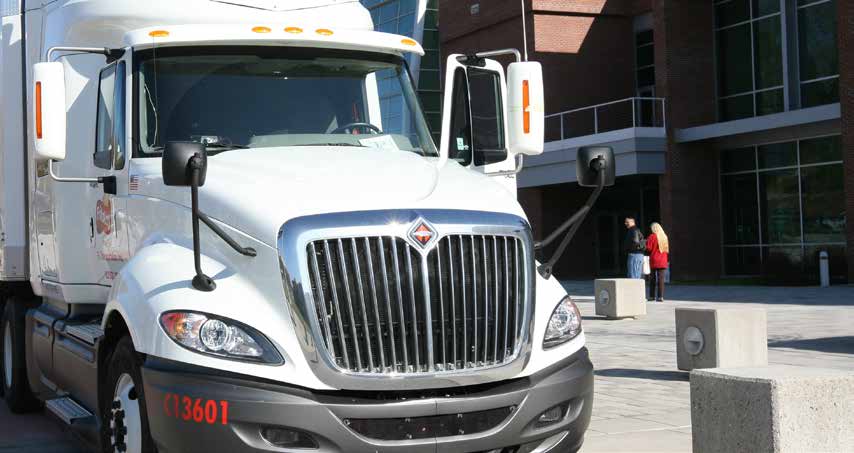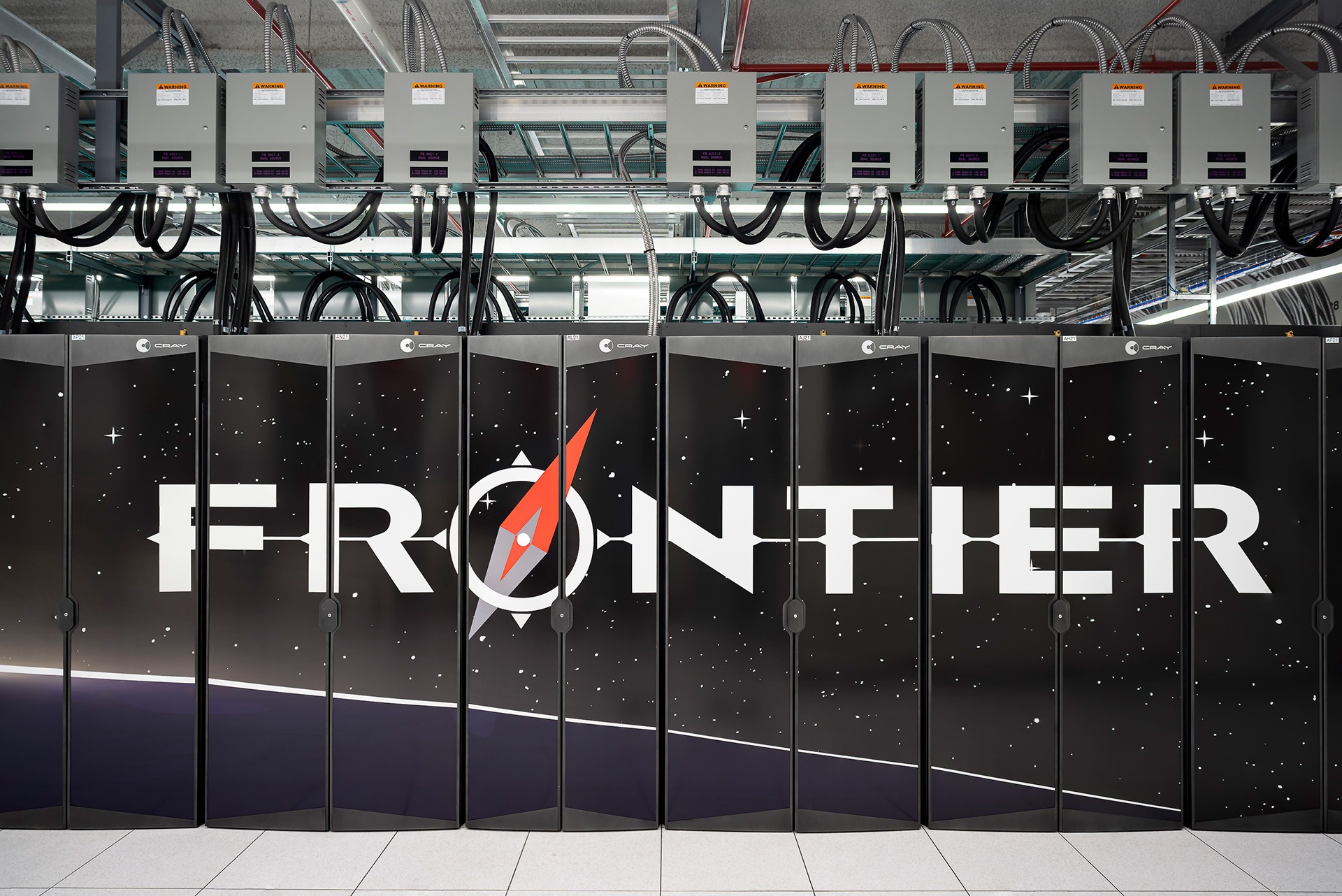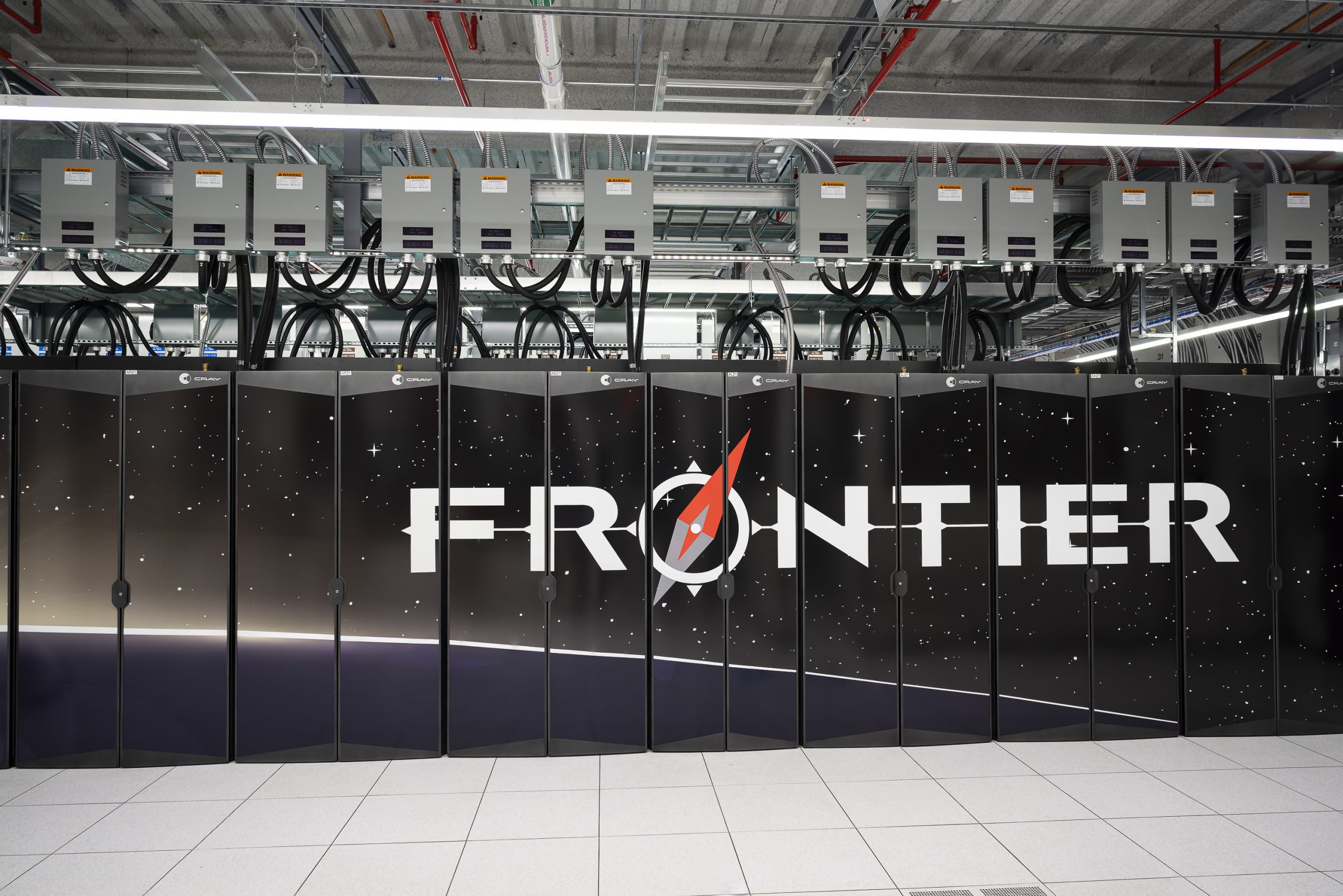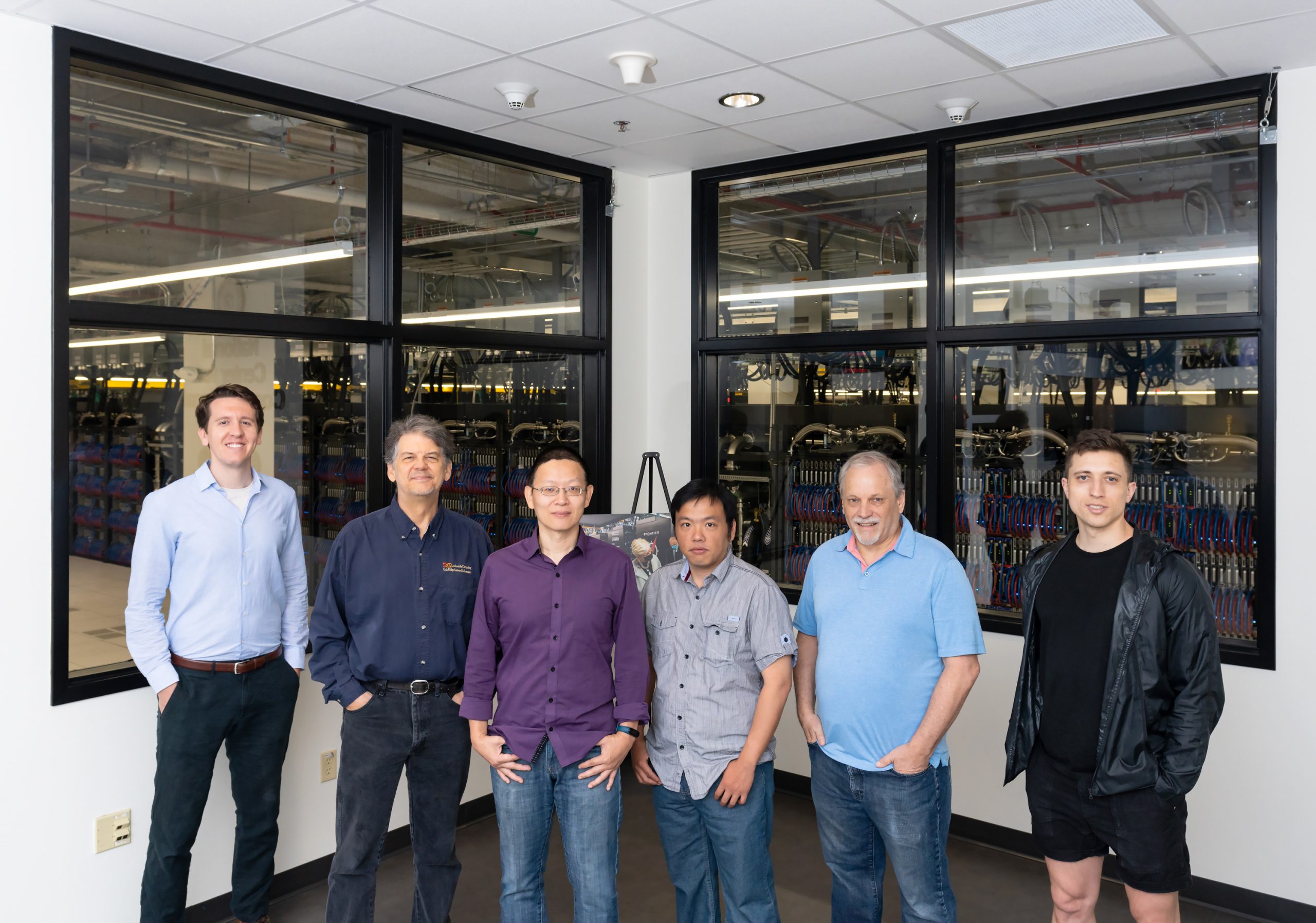In 2017, the Oak Ridge Leadership Computing Facility celebrated 25 years of leadership in high-performance computing. This article is part of a series summarizing a dozen significant contributions to science enabled by OLCF resources. The full report is available here.
To increase the fuel efficiency of Class 8 long-haul trucks small business SmartTruck Systems (SmartTruck) used the OLCF’s Jaguar supercomputer in 2010 to better understand the complex airflow around these vehicles so the company could create unique add-on components that dramatically reduce fuel-sapping drag.
At that time, these so-called “18-wheelers” averaged only 6 mpg or less and the million-plus in operation consumed more than 1.5 million barrels of fuel per day. New fuel mileage standards were looming, emphasizing the need for technology that would increase truck fuel efficiency so that semis could remain compliant with the regulations.
In 2010, the SmartTruck company (at the time, a start-up), undertook a project led by then-CEO Mike Henderson and current SmartTruck engineer John Anastos to successfully employ Jaguar to develop a detailed and highly accurate long-haul truck model and simulate the airflow around it, revealing the truck’s complex aerodynamics. Using this new understanding, the team designed add-on parts that redirected the air around the vehicle to dramatically decrease drag. Trucks retrofitted with the parts operated at an increased highway fuel efficiency of up to 12 percent, allowing them to meet the new regulations as well as achieve an estimated annual fuel savings of $5,000 per truck.
The Science
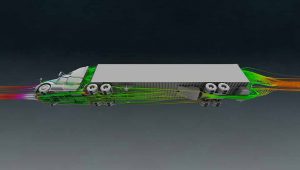
Supercomputing simulations at ORNL enabled SmartTruck engineers to develop the UnderTray System, some components of which are shown here. The system dramatically reduces drag—and increases fuel mileage—in long-haul trucks.
When the California Air Resource Board (CARB) announced aggressive new fuel efficiency regulations for long-haul trucks, Henderson saw a business opportunity to make 18-wheelers more aerodynamic. The same had already been done for automobiles and planes via modeling and simulation, and Henderson and his team felt confident that similar computational techniques could be applied to long-haul trucks.
Using the OLCF’s Jaguar and NASA’s Fully Unstructured Navier–Stokes code called FUN3D, a computational fluid dynamics (CFD) software suite that typically models aircraft aerodynamics, the team developed one of the most detailed (and therefore the most accurate) numerical models of a Class 8 tractor and trailer to date. The team broke the truck into hundreds of pieces and examined the drag on each piece to determine how they interacted across the entire system. The simulations revealed the details needed to create an optimized “UnderTray System” of fuel-saving add-on parts, such as aerodynamic wheel fairings and a special airflow-diverting sled that attaches to the axels on the underside of the vehicle. The system’s biggest component, the rear diffuser, was a major factor in optimizing airflow and boosting fuel efficiency. The researchers also redesigned the rain gutter to recapture air, create a healthy airflow boundary layer, and direct the flow down into the truck’s trailing wake to improve operating efficiency.
Access to Jaguar permitted the SmartTruck team to run models approximately 10 times faster than was possible on their internal systems, dramatically accelerating their understanding of truck aerodynamics and reducing the time to create the new parts. The physical tests results were within one percent of the CFD calculations, validating the models and affirming the predictive accuracy of simulations and the operational efficiency of the new add-on component designs based on those simulations. This reduced the need to develop a time-consuming and costly series of physical prototypes, enabling SmartTruck to reduce the time from concept to a manufacture-ready design by 50 percent—from 3 years to 18 months.
“Using Jaguar and FUN3D has provided us with many ‘aha moments’ and this was one of them.”—John Anastos, SmartTruck
The Legacy
SmartTruck’s products were introduced successfully to the market and were named in Heavy Duty Trucking Magazine’s list of Top 20 products in 2011, 2015, and 2017. By providing SmartTruck Systems with advanced computational resources, the OLCF demonstrated how its industrial partnerships can advance understanding of important science and boost the competitiveness of US businesses.
Related Publication: Henderson, Michael Lorenzo and Stephen Alfred Wulff. “Devices and Methods for Reducing Vehicle Drag.” SmartTruck Systems, LLC, assignee. Patent US 8342595 B2 (1 Jan 2013).


